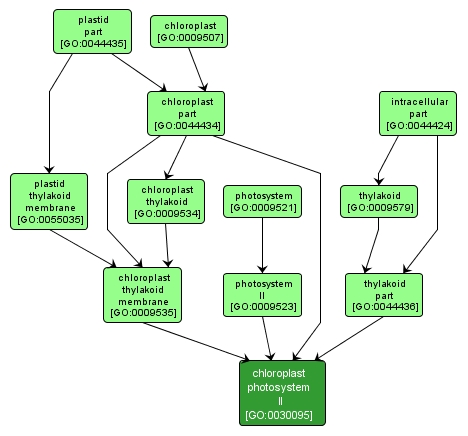GO TERM SUMMARY
|
| Name: |
chloroplast photosystem II |
| Acc: |
GO:0030095 |
| Aspect: |
Cellular Component |
| Desc: |
An integral chloroplast membrane complex containing the P680 reaction center. In the light, PSII functions as a water-plastoquinone oxidoreductase, transferring electrons from water to plastoquinone. |
|

|
INTERACTIVE GO GRAPH
|














